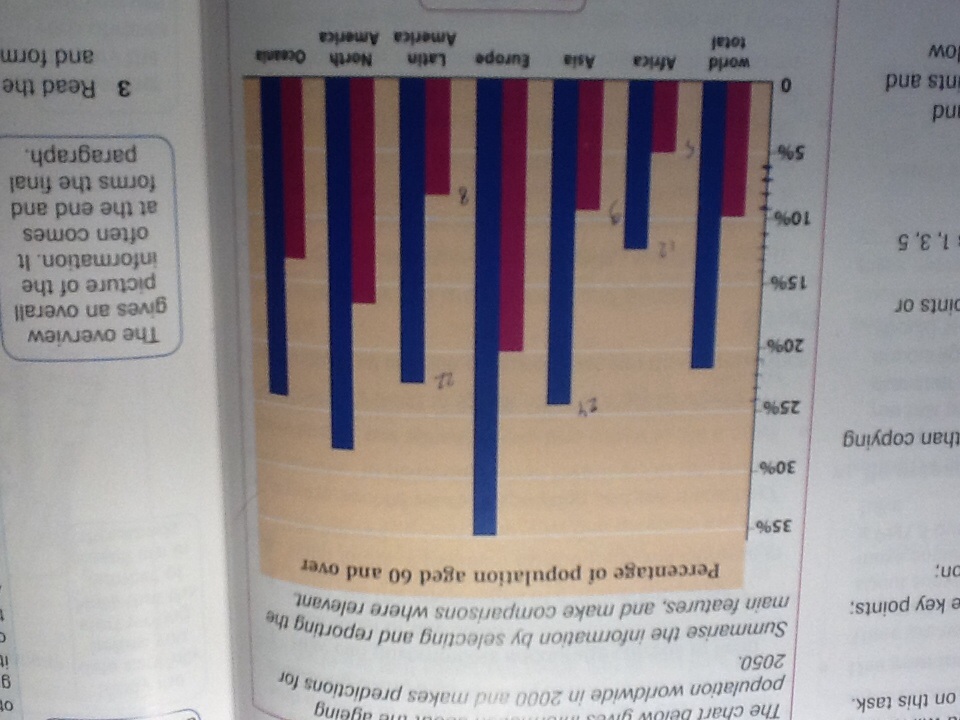The chart below gives information about the ageing population worldwide in 2000 and makes predictions for 2050
Summaries the information below by selecting and reporting the main features, and make comparisons where relevant.
The graph illustrates figures regarding the change of the percentage of population aged 60 and over between 2000 and 2050.
Overall, the number of elderly people is expected to grow in all parts of the world, with the world total's index rising from 10 per cent to over 20 per cent. It is noticeable that while the pattern is similar in all continents, the degree of change varies.
A closer look at the data reveals that Europe, North America and Oceania contain the biggest percentages of elderly people, with the figures ranging from 20 to 13 per cent respectively. Predictions show that the continents will remain its leading positions in the future: in Europe, North America and Oceania those percentages will climb up to 35%, 27%, and 24% accordingly. In this respect, Latin America, Asia, and Africa have the least proportions of population aged 60 and over. While the percentages of the leading countries are above 10%, Asia, Africa, and Latin America have not exceeded this mark.
However, those three parts of the world are expected to present the most dramatic changes in the figures. It is predicted that by 2050, the figures will increase almost threehold in Asia and Latin America; in Africa, they will more than double.
Although there is a clear upward trend in this age group all around the world, ageing citizens are expected to make up less than half of the population in the next 50 years.
Summaries the information below by selecting and reporting the main features, and make comparisons where relevant.
The graph illustrates figures regarding the change of the percentage of population aged 60 and over between 2000 and 2050.
Overall, the number of elderly people is expected to grow in all parts of the world, with the world total's index rising from 10 per cent to over 20 per cent. It is noticeable that while the pattern is similar in all continents, the degree of change varies.
A closer look at the data reveals that Europe, North America and Oceania contain the biggest percentages of elderly people, with the figures ranging from 20 to 13 per cent respectively. Predictions show that the continents will remain its leading positions in the future: in Europe, North America and Oceania those percentages will climb up to 35%, 27%, and 24% accordingly. In this respect, Latin America, Asia, and Africa have the least proportions of population aged 60 and over. While the percentages of the leading countries are above 10%, Asia, Africa, and Latin America have not exceeded this mark.
However, those three parts of the world are expected to present the most dramatic changes in the figures. It is predicted that by 2050, the figures will increase almost threehold in Asia and Latin America; in Africa, they will more than double.
Although there is a clear upward trend in this age group all around the world, ageing citizens are expected to make up less than half of the population in the next 50 years.

image.jpg
